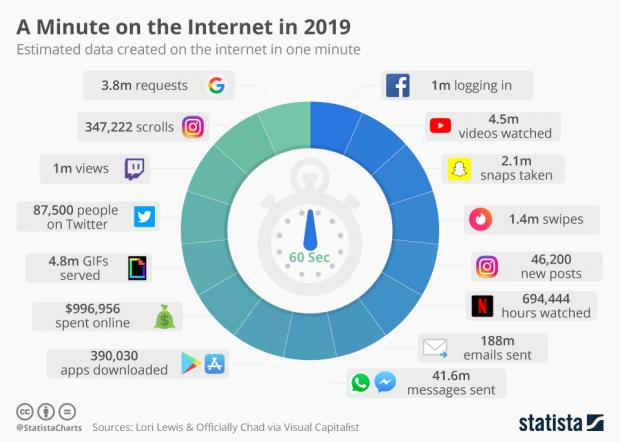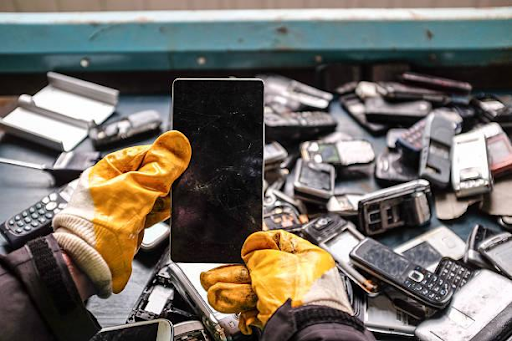Digital Ethics
| Site: | OpenLearn Create |
| Course: | 3 Digital Skills |
| Book: | Digital Ethics |
| Printed by: | Guest user |
| Date: | Thursday, 20 November 2025, 9:53 PM |
1. Communicating responsibly
When working in shared online spaces, it is important that you:
- treat others with courtesy and respect
- safeguard confidentiality and personal security
- understand and respect copyright
- are careful about posting any information that could pose a security risk such as your detailed location or personal data such as your date of birth.
Treat others with the same courtesy and respect as you would in a face-to-face conversation. It is not a problem to be controversial and outspoken with your ideas but never be offensive or hurtful. Remember that when you post something online it could be out there forever, even if you delete it, as people copy and distribute information so make sure you think carefully before posting something.
Don’t write or share anything that is:
- defamatory, obscene, discriminatory, illegal, incites hatred or could damage the reputation of others
- confidential or infringes another person’s privacy; for example, you should not share someone’s contact details without their permission
- sent to you privately and not intended to be shared with others
- likely to make someone feel bullied or harassed
- malicious or potentially harmful to others.
Online messages are sometimes misunderstood because the other person’s facial expression can’t be seen. It can help to use emoticons to show you are smiling :), surprised 8-o, sad :(, embarrassed :-I and so on.
When you reply to a message you can set the scene by quoting part of the original message. Make it easy for readers to see what you have done by putting quoted text between double angle brackets, << and >>.
Don’t write in capital letters because it can look as though you are SHOUTING and it is harder to read.
2. Copyright
Copyright is a mechanism to protect intellectual property and refers to the right to copy or use an intellectual piece of work someone has produced, such as a photo, video or audio recording. Copyright means that only the original creators of those products and anyone they give authorisation to are allowed to share and reproduce this work. Making something copyrighted, therefore is a way to protect your intellectual property against someone using it without your consent and gives you a legal mechanism to prosecute them. Copyright comes into existence as soon as a work is ‘created’ and recorded in writing ‘or otherwise’. It does not need any registration (unlike trademarks and patents) to achieve protection in law. It is important to recognise that copyright in user-generated content will always belong to the author - which could be you. User-generated content is content created using the user’s own creative effort e.g. uploading his/her photographs, expressing thoughts in a blog, and contributions and discussions within social media. Copyright includes protection for: books, articles, blogs, software, photographs, drawings, music, recordings, broadcasts and films.
Something that is protected by copyright does not necessarily have to be labeled with the familiar copyright symbol ©. Authors/owners of copyright works are the only authority able to grant use of their works (or parts of their works) across any media whilst the works remain in copyright (which can be for up to 70 years in some countries). Uploading or copying content without the copyright owners’ permission may be an infringement of copyright, which is a criminal offence in most countries. It is important that you do check terms and conditions on information sources where you have taken content. They may allow use of material without permission, but under certain licence terms (e.g. under a Creative Commons license). For copyrighted material, you must not upload any content (unless very small) that does not belong to you or for which you do not have permission. For example, you may be able to use up to 400 continuous words from a published book.
In this course, we use a copyright mechanism called “Creative Commons”. Creative Commons is a type of license that you can use when you want to give other people the right to share, use or build on work that you have created. There are different types of Creative Commons licenses that you can choose if you for example only want to allow non-commercial uses of a piece of work you have produced. For other people sharing your work, it also protects them from any concerns about copyright infringement as long as they share or use your work in the ways and under the conditions that are specified in your chosen creative commons license.
Here is a good video that explains the idea behind creative commons in a bit more detail:
3. Environmental impacts of digital technologies
Along with all the benefits digital technologies create for us, they also have a range of environmental impacts. The main impacts are the CO2 emissions produced from the electricity needed to run those technologies, toxic waste created when disposing them, and the resources that are necessary to produce these technologies. Being aware of those impacts is important. It is good practice to delete unwanted digital information so that it does not take up server space or space on your device, to dispose of hardware at a recycling center and to limit the times that you upgrade your devices or use reconditioned devices.
Using digital technologies and especially the internet uses a lot of electricity, which also causes CO2 emissions. On a global scale, internet use and the rising global electricity demand also has many environmental impacts. To get an idea of the scale of this issue, look at the infographic below which shows the estimated amount of data created on the internet in one minute. Overall, the use of digital technologies now actually has a bigger impact on global warming than the entire aviation industry (https://en.reset.org/knowledge/our-digital-carbon-footprint-whats-the-environmental-impact-online-world-12302019).

Disposing of digital technologies, so-called E-waste, can be difficult as they can’t be placed in normal garbage bins. They often contain metals and components, like mercury, lead or other heavy metals that can cause contamination and pollute the environment. At the moment, most E-waste is placed in landfills, from where it can seep into the soil and water. Even though E-waste only makes up around 2% of the waste in landfills, it is sometimes responsible for up to 70% of the toxic waste found there (https://en.reset.org/knowledge/electronic-waste). In many places there are formal and informal recycling sectors for E-waste, which recover some of the valuable components contained in those technologies so they can be reused. The idea of recycling those components is highly promising, however this needs to be done under proper safety conditions as those components can also be harmful for human health. So, when it comes to replacing your digital technologies, make sure to check carefully how you can safely dispose of it. In some places organisations offer take-back systems for E-waste but this is not always an option. Investigate where E-waste can safely be disposed of or recycled near you.

Another issue are the human and environmental impacts from mining the raw minerals that are needed to produce digital technologies. In some places the minerals mined for digital devices are done so in poor working conditions and in a way that negatively impacts the environment (https://en.reset.org/knowledge/ecological-impact-mobile-phones). Understanding the ethical and environmental practices of your digital device supplier will help you to choose companies that are attempting to safeguard people and the environment.
Now, after having finished this book, make sure to go back to the main page and complete activity 6.